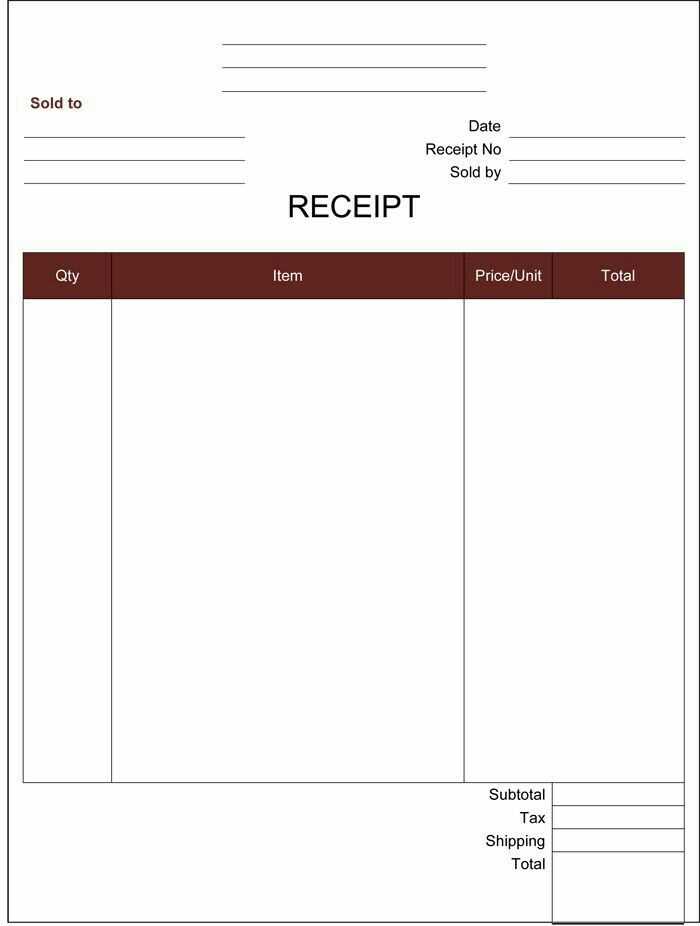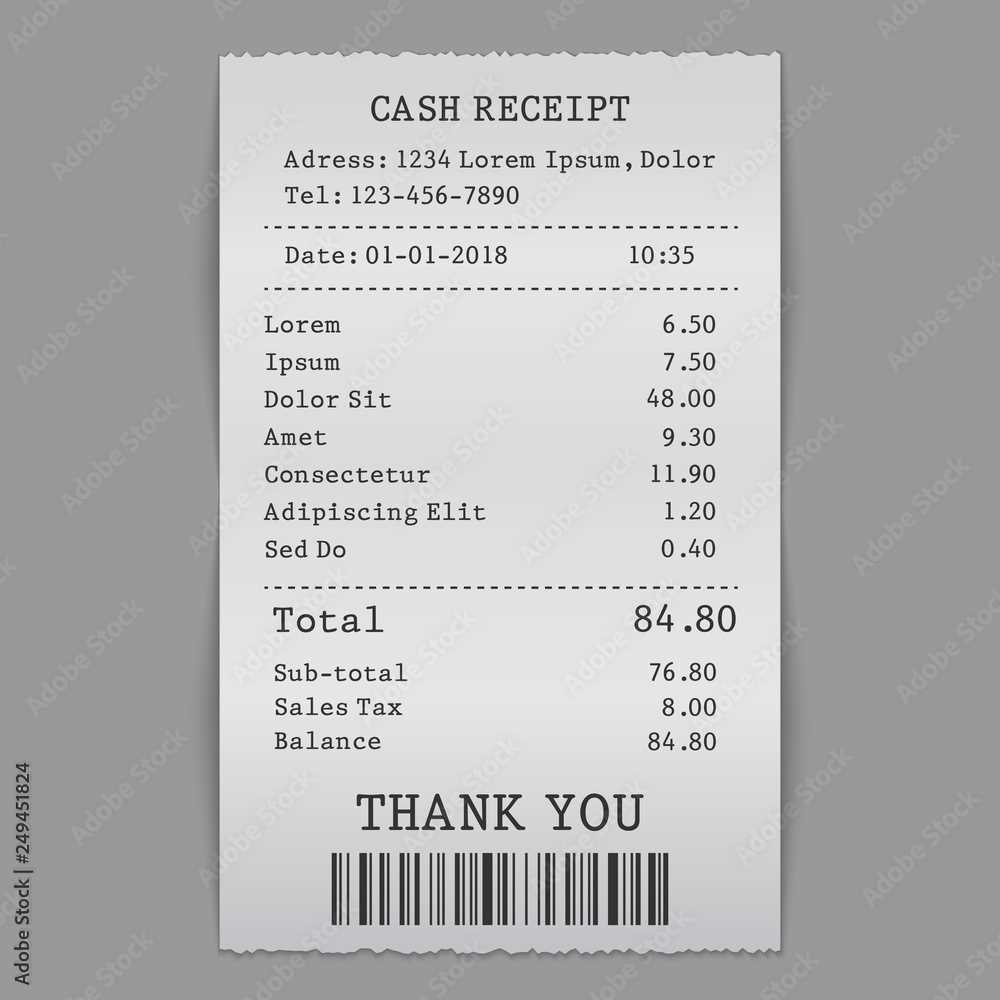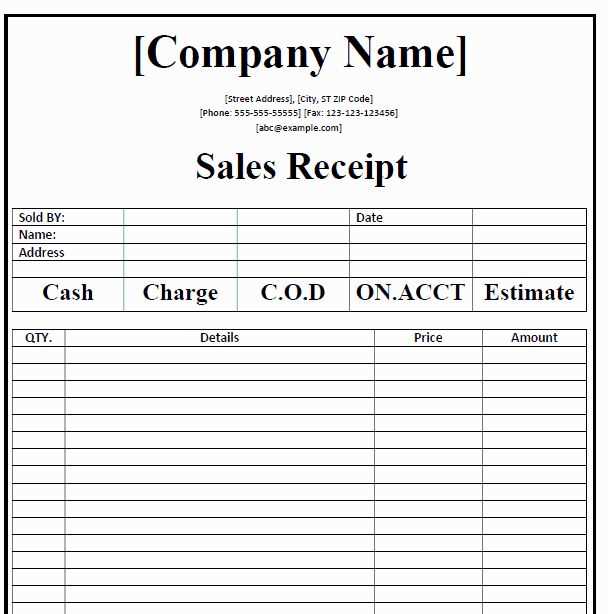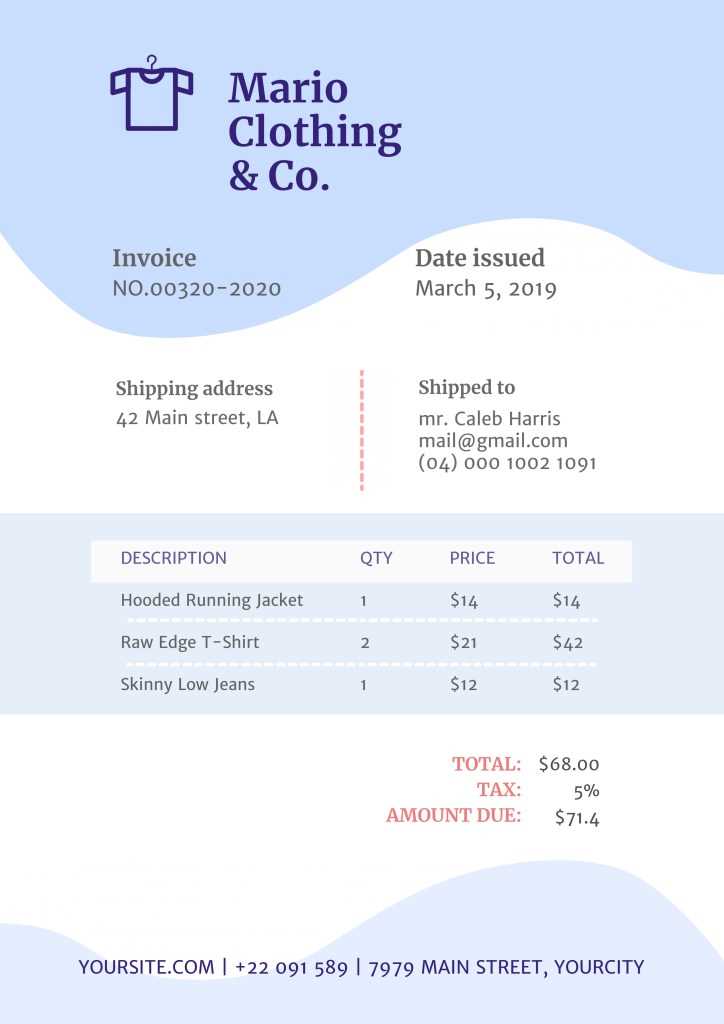
How to Create a Clothing Receipt
Creating a clothing receipt requires clear and organized information to ensure both the seller and buyer have accurate records. It should cover key details such as item description, price, and purchase date. Use the template below to create your own receipt.
Template Structure
- Store Name & Address: Include the name of the store and its physical or online address.
- Date of Purchase: Always list the exact date when the transaction occurred.
- Item Details: Specify the clothing items purchased. Include quantity, size, color, and any relevant details.
- Price: Show the price for each item, as well as the total amount paid, including taxes and any discounts.
- Payment Method: Clarify how the payment was made (e.g., credit card, cash, or online payment).
- Receipt Number: Provide a unique reference number for tracking purposes.
- Return Policy: If applicable, mention any return or exchange policies for the items purchased.
Sample Template

Below is a sample of how the receipt could look:
Store Name: Fashion Hub Store Address: 1234 Main Street, New York, NY Date of Purchase: February 5, 2025 Item Description: - Red Dress, Size M, $45.00 - Black Jeans, Size 32, $35.00 Subtotal: $80.00 Tax (8%): $6.40 Total Amount: $86.40 Payment Method: Credit Card Receipt Number: 0012457 Return Policy: 30-day return policy on unworn items with receipt.
Adapt this template based on your specific needs, ensuring that all necessary details are included. Keep the format simple and easy to read, and ensure you have space for any additional notes you may need to add. This helps create transparency for both parties involved in the transaction.
Clothing Receipt Template: A Practical Guide
Creating a clothing receipt template requires focusing on the key information that your customers need. The format should be clear and professional to ensure that all transaction details are easily understood.
Key Elements to Include in Your Clothing Receipt
At a minimum, your receipt should include the following information:
- Store Name and Contact Information: Include your store’s name, address, phone number, and email for easy customer follow-up.
- Transaction Date: Clearly mark the date of the transaction for future reference.
- Itemized List of Products: List each item purchased along with a brief description, size, quantity, and price.
- Total Amount: Include the subtotal, taxes, and the final amount due.
- Payment Method: Indicate how the customer paid, whether by cash, card, or another method.
- Return Policy (Optional): Briefly include your return policy, especially if applicable to the transaction.
Formatting Tips for Clear and Professional Receipts
Ensure that your template is easy to read and well-organized. Use a clean font, like Arial or Helvetica, and set clear spacing between sections. Bold the headings to make them stand out and align all the items in a neat list. If you are including taxes, make sure they are broken down separately from the subtotal, making the final price easy to identify.
Consider including a logo or branding at the top of the receipt to strengthen your business identity. Ensure there is enough space for your customers to store the receipt without it becoming wrinkled or hard to read.
How to Customize Your Receipt for Different Transactions

Adapt your template depending on the type of clothing or transaction. For example, if you are selling seasonal clothing, you may want to add a section for discounts or promotions. For bulk purchases, include a section for quantity discounts or special offers. Customizing the receipt ensures that it reflects the nature of the transaction while still being clear and concise.
For exchanges or returns, add a “Return” section on the receipt, which can track the reason for the return, and include any conditions like restocking fees, if applicable.
Common Mistakes to Avoid When Creating Receipts

Avoid cluttering the receipt with unnecessary information that could confuse the customer. Keep the receipt simple and ensure all necessary details are included in a logical order. Ensure that the prices are accurate and that the payment method is clearly listed. Missing or unclear information may lead to customer frustration or errors in tracking sales.
How to Use Digital Tools for Generating Receipts

Digital tools can simplify the process of creating and managing receipts. Use receipt-generating software or templates available in programs like Microsoft Word, Google Docs, or dedicated invoicing tools. These tools can automate calculations, provide professional layouts, and allow you to save templates for repeated use, making the receipt generation process faster and more efficient.


